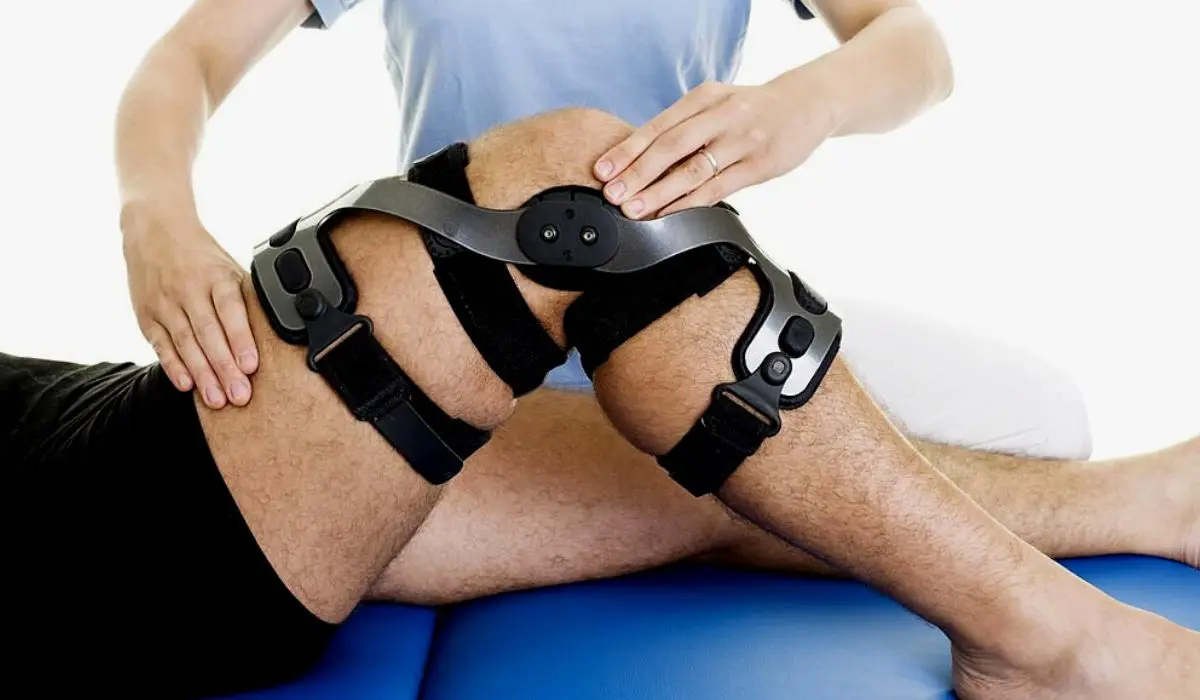Groin injuries hurt and can incapacitate you; however, appropriate methods of wrapping will give you protection and alleviation from torment. If you’re an athlete or an individual and dealing with small hitch issues, then discovering how to wrap your injury groin hatchet properly is imperative for your injury.
Different Ways To Wrap A Groin Injury
Here, we’ll look at three different ways to wrap a groin injury to aid in quick recovery and keep you walking again as fast as possible.

🔶 The Basic Groin Wrap
The groin wrap, or barebones version, is an efficient way to treat or support a strained or injured groin muscle. Here’s how to do it:
Materials Needed:
An elastic bandage or athletic tape
Steps:
✔ Prepare the Area: Start by cleaning and drying the groin area to ensure the wrap adheres properly.
✔ Anchor the Wrap: Begin by anchoring the bandage or tape just above your knee on the injured side.
✔ Wrap Around the Affected Area: Gently wrap the bandage or tape around the groin area in a circular motion, moving upward. Make sure it’s snug but not too tight to avoid cutting off circulation.
✔ Secure the End: Once you’ve wrapped the groin area, secure the end of the bandage or tape in place.
✔ Test for Comfort: Ensure that the wrap is comfortable and that it provides the necessary support without causing discomfort or restricting movement.
🔶 The Horseshoe Wrap
The horseshoe wrap is another technique that can provide targeted support for a groin injury. It’s particularly useful for injuries that require more precise wrapping. Here’s how to do it:
Materials Needed:
An elastic bandage or athletic tape
Steps:
✔ Prepare the Area: Clean and dry the groin area as mentioned before.
✔ Start the Wrap: Anchor the bandage or tape just above the knee on the injured side.
✔ Wrap Around the Thigh: Instead of wrapping in a circular motion, this time, wrap the bandage or tape horizontally around your thigh, creating a “horseshoe” shape.
✔ Cross Over the Groin: After completing one horizontal pass around the thigh, cross the bandage or tape over the groin area diagonally to the opposite side of your hip.
✔ Continue Wrapping: Wrap the bandage or tape horizontally around your waist and back to the starting point.
✔ Secure the End: Secure the end of the bandage or tape in place.
✔ Check Comfort: Ensure the wrap is snug and supportive without being too tight
🔶 The Compression Wrap
Compression wraps can help reduce swelling and provide stability for a groin injury. This technique involves a bit more tension, so be cautious not to wrap too tightly, which could impede circulation. Here’s how to do it:
Materials Needed:
Elastic bandage or compression wrap
Steps:
✔ Prepare the Area: Clean and dry the groin area, as always.
✔ Start the Wrap: Begin by anchoring the bandage or compression wrap just above the knee on the injured side.
✔ Wrap in a Spiral: Wrap the bandage or compression wrap in a spiral pattern, working your way up the thigh towards the groin. Keep the tension consistent but not overly tight.
✔ Cover the Groin: When you reach the groin area, continue wrapping around the waist and back down to the thigh.
✔ Secure the End: Secure the end of the bandage or compression wrap in place.
✔ Comfort Check: Ensure the wrap provides the desired compression without causing discomfort or numbness.
Conclusion
Groin injuries should be wrapped if possible as part of the healing process. By employing one of the three strategies—the minimal groin tie, the horseshoe bond, or perhaps the compression bind—you’ll be able to offer the necessary reinforcement and stabilization toward the injured spot. T
hat being said, it’s critical to check with a medical doctor, chiropractor, or physical therapist before trying out any wrapping method; it should align with your injury, and it may be tailored in favor of each individual’s healing process. Recovery from any type of groin injury requires attention, patience, and appropriate care.
Read More:- Sports Performance Enhancement – Techniques & Therapies!
FAQs
Q1: So what’s the point of strapping a groin injury?
A1: Wraps are used around the groin to give support, stability, and compression to the injured area. It can minimize discomfort, reduce the risk of recurring harm, and support a quicker recovery.
Q2: Can I use any type of girth or tape recording for a groin injury?
A2: It’s recommended to use elastic tapes or athletic tapes specifically designed for medical use. These accouterments provide the necessary support and contraction without causing discomfort or skin vexation.
Q3: How tight should the serape be?
A3: The serape should be snug to give support, but not so tight that it cuts off rotation or causes discomfort. You should be able to fit a cutlet under the serape comfortably.
Q4: Are these wrapping styles suitable for all types of groin injuries?
A4: These wrapping styles are generally suitable for mild to moderate groin strains or injuries. Still, it’s essential to consult with a healthcare professional to determine the applicable treatment for your specific injury, as severe injuries may require different approaches or medical attention.
Q5: How long should I keep the serape on my groin injury?
A5: The duration of wearing the serape depends on the inflexibility of the injury and your healthcare provider’s recommendations. Generally, wraps are worn during physical exertion and removed during rest periods. Follow your healthcare provider’s instructions for stylish results.